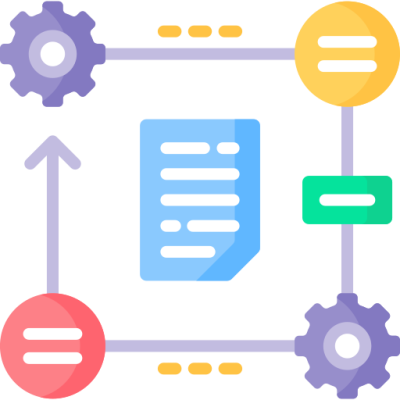Today, businesses of all sizes rely on robust and efficient solutions to manage their ever-growing information. Enter the rack server, a powerful and versatile computer specifically designed for data centers. Rack servers offer a standardized and efficient way to deploy and manage computing resources in a DC environment, making them a popular choice for businesses and organizations with substantial IT infrastructure needs. But exactly what is rack server, and how does it work? This guide of VinaHost will take you on a journey into the world of rack servers.
1. What is Rack Server?
What is Rack a Server? A rack server is a type of server hardware that is designed to be mounted in a server rack, which is a standardized enclosure or frame used to house multiple servers and other networking equipment in data centers or server rooms.
Rack servers are compact, space-saving devices that are ideal for organizations with limited physical space and require high-density server deployments.
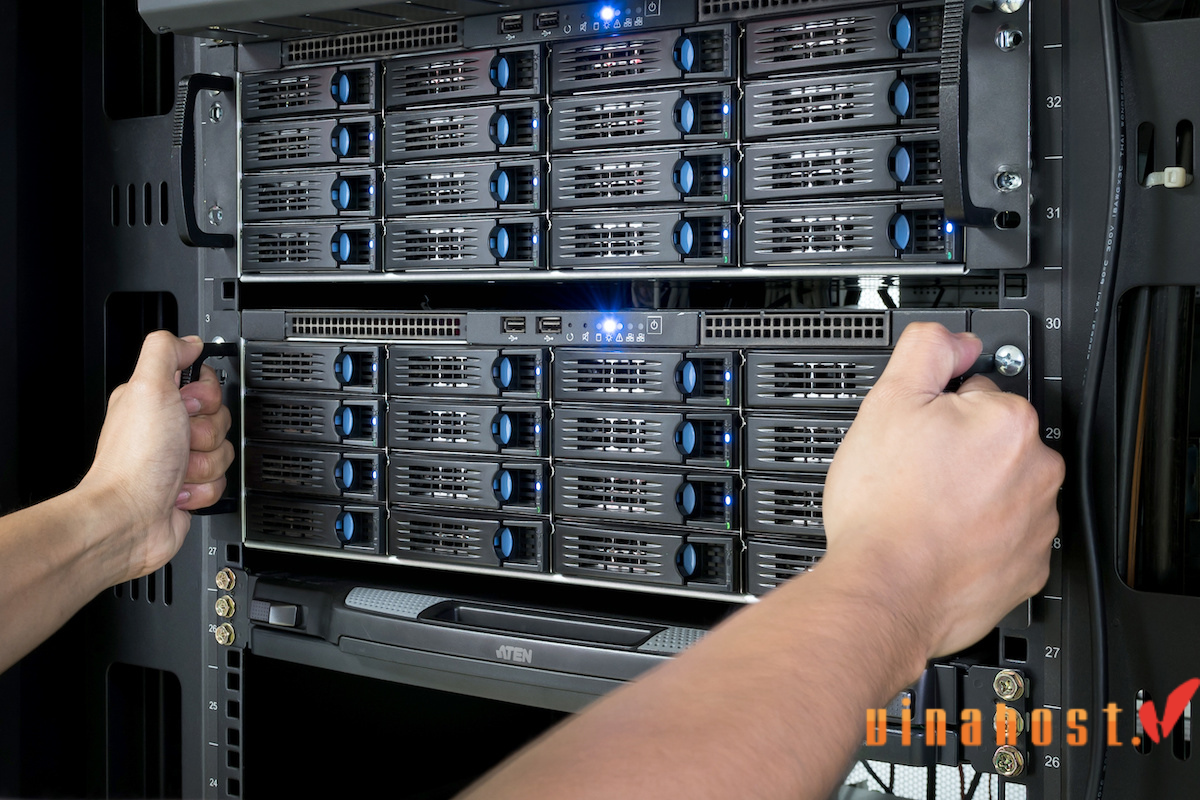
Also Read: What is a Server Room? | Components of a Server Room
2. Types of Rack Servers?
There are two main ways to categorize rack servers: by form factor and by application.
By form factor:
- Open-frame racks: These are the most basic type of rack server. They consist of two vertical posts with horizontal rails to support the servers. Open-frame racks are inexpensive and provide good airflow, but they offer little security or protection from dust and debris.
- Enclosed racks: Enclosed racks are more secure than open-frame racks. They have doors and side panels that protect the servers from dust, dirt, and physical tampering. Enclosed racks also tend to have better airflow management than open-frame racks.
By application:
- Blade servers: Blade servers are a type of server that is designed to be installed in a blade enclosure. Blade servers are highly modular and can be easily added or removed from the enclosure. They are a good option for data centers that need a high density of servers in a small space.
- High-density servers: High-density servers are designed to pack as much processing power as possible into a small space. They are typically used in data centers that need to support a large number of users or applications.
- Storage servers: Storage servers are designed to provide a large amount of storage capacity. They are typically used for tasks such as data backup, archiving, and file sharing.
3. Key features of rack servers
What is Rack Server feature? Rack servers boast several key features that make them ideal for data centers and enterprise computing environments:
- Standardized size: They adhere to a uniform width of 19 inches, allowing them to fit seamlessly into server racks, maximizing space utilization. Their height is measured in units (U), with 1U equating to 1.75 inches. Most commonly, rack servers are 1U or 2U high, but some can be taller to accommodate more powerful components.
- Scalability: A significant advantage is the ease of scaling your system. As your business needs grow, you can effortlessly add more rack servers to the existing rack, boosting processing power, storage capacity, or other resources on the fly.
- Enhanced airflow: Rack server design prioritizes airflow. The racks themselves and the servers within are built to promote optimal air circulation, preventing overheating and ensuring the servers function properly.
- Hot-swapping: Minimizing downtime is crucial. Rack servers often support hot-swapping, enabling you to remove and replace a server while the system is still operational. This is valuable for maintenance or upgrades without disrupting critical tasks.
- Redundancy: For critical operations, reliability is paramount. Rack servers frequently incorporate redundant power supplies. If one fails, the server can continue using the other, minimizing downtime risks. Similarly, they might have multiple network connections for reliable data transfer.
4. How does a rack server work?
Now that you understand what is rack server, let’s delve into its operation.
A rack server works by leveraging its design to fit into a standard rack-mountable chassis, typically 19 inches wide. Here’s how it operates:
The rack server is physically mounted into a rack using rails or screws. The servers are stacked vertically, occupying units of space known as “U” (1U = 1.75 inches). For example, a 1U server occupies 1.75 inches of vertical rack space.
Each rack server is connected to power and network infrastructure via cables routed through the back of the rack. Power connections include main power supplies and often redundant power supplies for reliability. Network connectivity is typically provided through Ethernet cables.
Racks are designed with airflow management in mind. Servers generate heat, so racks have fans and ventilation to ensure proper cooling. Servers often have fans inside them as well, pulling cool air in through the front and expelling hot air out the back.
Rack servers are managed either locally via a console connected directly to the server or remotely using management software. This allows administrators to monitor server health, manage configurations, and troubleshoot issues without physically accessing each server.
Rack servers house the necessary components for computing tasks, including CPUs (Central Processing Units), RAM (Random Access Memory), storage drives (such as HDDs or SSDs), and sometimes specialized hardware for specific purposes (e.g., GPUs for graphics processing or AI tasks).
Racks allow for easy scalability by adding or removing servers as needed. Redundancy can be built in by using multiple servers for load balancing or failover purposes.
Rack servers host various applications and services depending on the organization’s needs, such as web hosting, database management, virtualization (running multiple virtual machines on one physical server), and more.
Also read: What is Server Administration? | The Future of Server Administration
5. What Are the Components of a Rack Server?
What is rack server component? A rack server, while appearing as a single unit, houses various internal components working together to deliver its processing power. Here are the core components that make up a rack server:
- Central Processing Unit (CPU): The brain of the server, the CPU executes instructions and performs calculations. Rack servers typically have powerful CPUs with multiple cores to handle demanding workloads.
- Memory (RAM): Temporary storage that holds data currently being processed by the CPU. Rack servers come equipped with significant RAM capacity to support running multiple applications and processing large datasets efficiently.
- Storage Drives: For permanent data storage, rack servers can have multiple Hard Disk Drives (HDDs) or Solid-State Drives (SSDs). HDDs offer larger storage capacities at lower costs, while SSDs provide faster data access times but are typically more expensive.
- Motherboard: The central circuit board that connects all the other components within the server. It houses the CPU, memory slots, and expansion slots for additional hardware like graphics cards or network adapters.
- Power Supply Unit (PSU): Converts incoming AC power to the DC voltages required by the various components within the server. Rack servers often have redundant PSUs to ensure uninterrupted operation in case one fails.
- Expanders/ Riser Cards: These are optional cards that can be plugged into the motherboard to add more functionality. For example, a riser card might allow you to add additional PCIe slots for graphics cards or other high-speed devices.
- Networking Interface Card (NIC): Enables the server to connect to a network. Rack servers typically have multiple NICs for increased bandwidth and redundancy.
6. Sizing Up a Rack Server: The U Rack Unit Explained
Now that you understand what is rack server and how does it operate, let’s delve into an important aspect: size. When it comes to rack servers, size is measured in U rack units, a standardized unit that determines the server’s height.
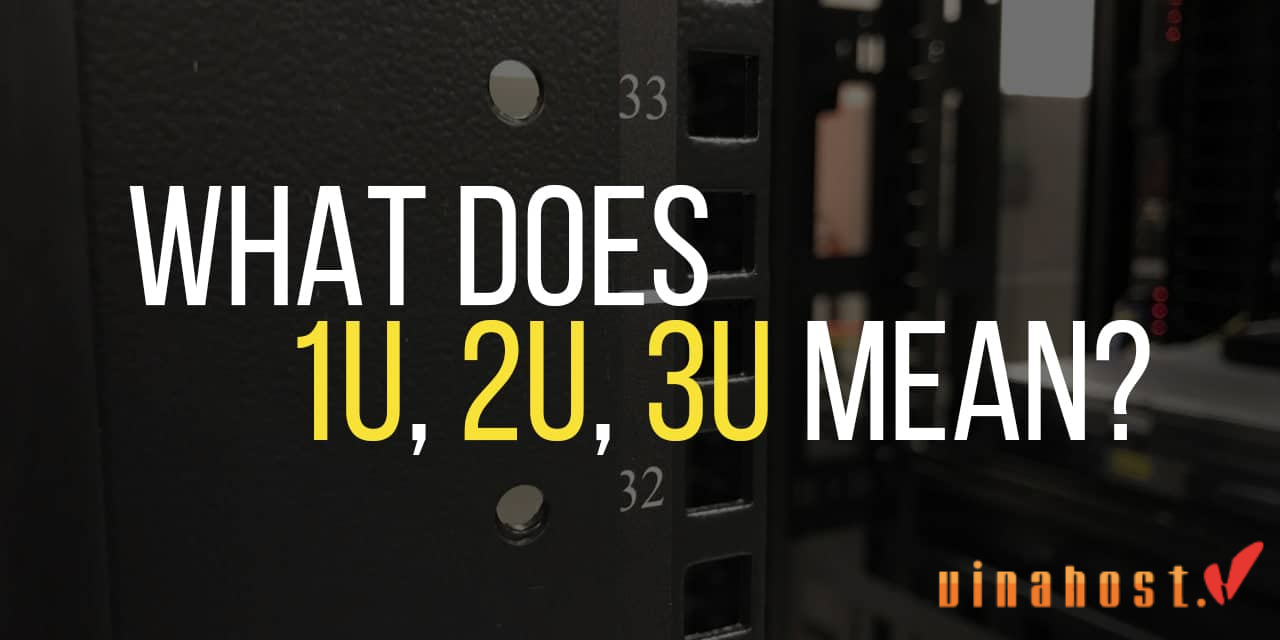
6.1. What is a U rack unit?
What is rack server unit? A U rack unit is equal to 1.75 inches (4.44 cm). This standardized unit ensures compatibility between rack servers and server racks. Server heights are denoted by a number followed by “U,” indicating how many U rack units the server occupies vertically within the rack.
6.2. Common rack server sizes (1U, 2U, etc.)
Rack servers come in various sizes, with the most common being:
- 1U: The most compact size, ideal for situations requiring high server density or limited space. They typically house basic components for less demanding tasks.
- 2U: A good balance between size and functionality, offering more space for additional components like more RAM or storage drives compared to 1U servers.
- 3U: Provides ample space for powerful processors, multiple storage drives, and additional features like redundant power supplies. Suitable for applications requiring more processing power and storage capacity.
- 4U and 5U: These larger form factors cater to high-performance computing tasks, virtualization, and situations requiring maximum expandability. They can house multiple CPUs, a significant amount of RAM, and extensive storage options.
6.3. Choosing the right size for your needs
What is rack server size for you? The ideal rack server size depends on your specific requirements. Here are some factors to consider:
- Processing Power and Memory Needs: More demanding tasks like complex calculations or virtualization require servers with more powerful CPUs and higher RAM capacity, often found in larger form factors (3U and above).
- Storage Requirements: The amount of data you need to store will influence the size. Larger servers (3U+) can accommodate more hard drives or SSDs for increased storage capacity.
- Scalability Needs: If you anticipate future growth, consider a server size that allows for adding additional components like memory or storage drives down the line.
- Available Space: Data center space is valuable. If space is limited, a smaller form factor (1U or 2U) might be preferable.
6.4. What is the difference between 1U vs 2U Rack Server?
The key difference between 1U and 2U servers lies in their size and capabilities:
- 1U: Compact and space-saving, ideal for basic tasks or situations with limited space. They typically have lower processing power and less storage capacity compared to 2U servers.
- 2U: Offers more space for additional components, allowing for increased processing power, more RAM, and potentially more storage options compared to 1U servers. A good choice for applications requiring a balance between size and functionality.
6.5. What is the difference between 3U vs 4U vs 5U Rack Server?
These larger form factors offer significant advantages for demanding workloads:
- 3U: Provides ample space for powerful CPUs, multiple storage drives, and additional features like redundant power supplies. Well-suited for applications requiring significant processing power and storage capacity.
- 4U and 5U: Built for high-performance computing, virtualization, and situations requiring maximum expandability. They can house multiple high-end CPUs, a large amount of RAM, and extensive storage options for the most demanding tasks.
Colocation VNPT
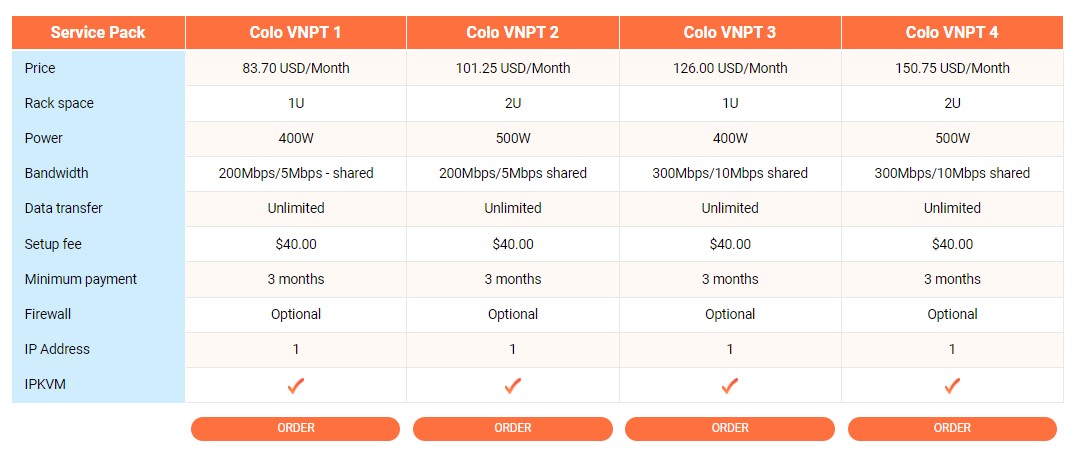
Colocation Viettel
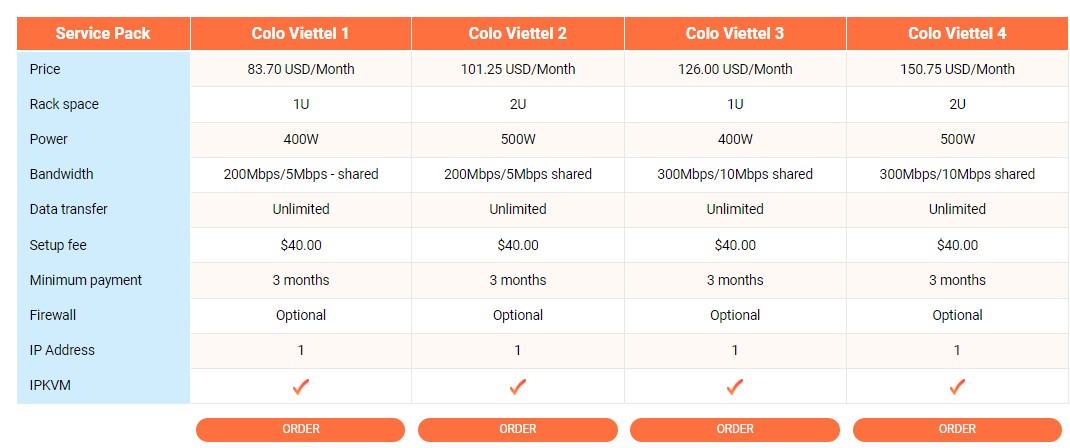
Colocation CMC
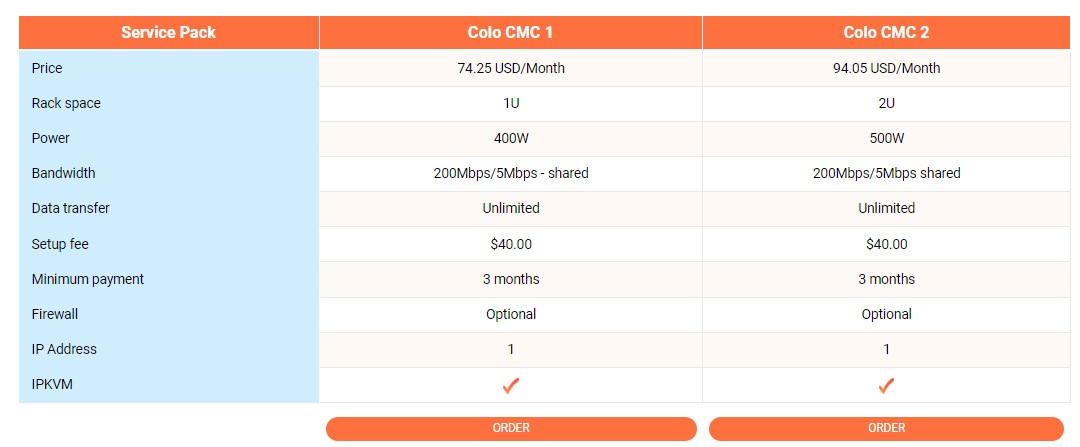
Additionally, we also provide:
7. What is a rack server used for?
In this part, VinaHost will show you what is a rack server used for. Rack servers are the workhorses of data centers and enterprise computing environments, used for a variety of crucial tasks:
- Data storage: They can house massive amounts of data, acting as file servers for businesses or storing information for applications like databases or cloud storage.
- Web hosting: Many websites rely on rack servers to store website files and run the software that keeps them operational.
- Virtualization: Rack servers can be virtualized, allowing them to run multiple virtual machines simultaneously, optimizing resource utilization and running various applications on a single physical server.
- High-performance computing (HPC): For tasks requiring immense processing power, like scientific simulations or complex financial modeling, clusters of rack servers can be combined to provide the necessary horsepower.
- Email servers: Businesses often use rack servers to manage their email infrastructure, storing emails and handling mail sending and receiving.
Also read: What is a Dedicated Server? | How Does a Dedicated Server Work?
8. The Benefits of Rack Servers
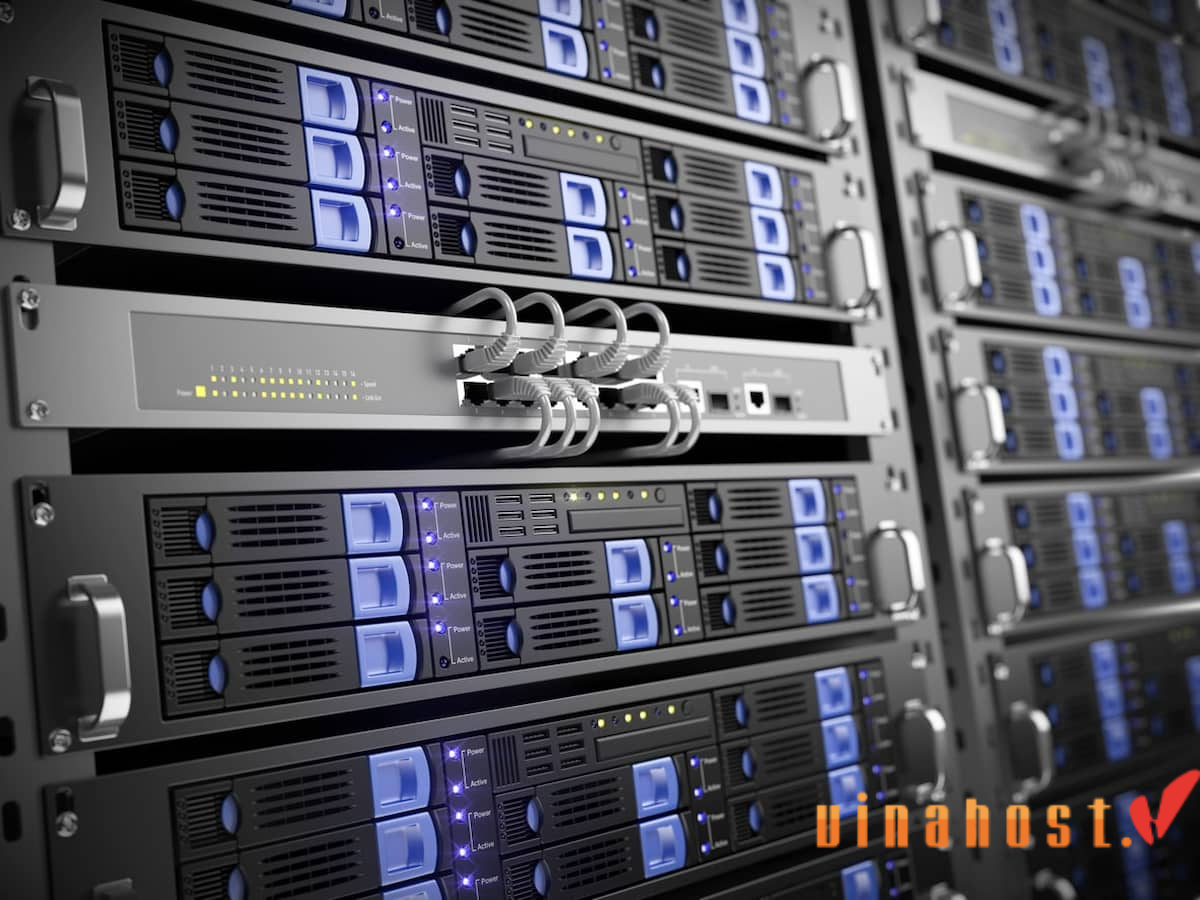
What is rack server benefit? Rack servers have become the backbone of data centers worldwide, offering a compelling combination of power, efficiency, and scalability. Here’s a breakdown of the key benefits they provide:
Space efficiency: Unlike tower servers that occupy valuable floor space, rack servers are designed for density. Their compact, standardized form factor (measured in U rack units) allows for stacking multiple servers vertically within a single rack, maximizing space utilization in data centers.
Scalability: Business needs evolve, and rack servers cater to this growth. Their modular design allows you to easily add or remove servers from the rack as needed. This scalability ensures your server infrastructure can adapt to increasing processing power, memory, or storage demands.
Improved cooling: Data centers generate significant heat. Rack servers are designed with efficient airflow management, typically drawing cool air from the front and expelling hot air at the back. This front-to- back airflow pattern within the rack optimizes cooling for multiple servers, ensuring optimal performance and preventing overheating.
Simplified maintenance: Many rack servers offer features for remote management. Administrators can use dedicated software tools to monitor server health, troubleshoot issues, and even update software remotely. This eliminates the need for physical access to each server for routine maintenance tasks, saving time and resources.
Standardization: A significant advantage of rack servers is their adherence to a standardized size. They are designed to fit perfectly within server racks with a standard width of 19 inches. This universality ensures compatibility with various rack models from different manufacturers, offering flexibility when building or expanding your data center infrastructure.
Security: Data centers typically implement robust security measures, including restricted access to server racks. Additionally, some rack servers may have built-in locking mechanisms for added physical security of the hardware itself.
Cost-effectiveness: While the initial cost of a rack server might be higher compared to a basic tower server, their space efficiency and scalability often translate to cost savings in the long run. By maximizing space utilization and accommodating future growth needs, rack servers can reduce the overall server footprint and hardware requirements in your data center.
Performance and reliability: Rack servers are designed for demanding tasks. They can be configured with multiple processors, ample memory, and various storage options to deliver the performance needed for running critical business applications, web services, and complex computing tasks. Additionally, features like redundant power supplies can enhance reliability and minimize downtime.
9. What is the difference between blade server and rack server?
All three – rack servers, tower servers, and blade servers – are server types used for computing tasks, but they differ in form factor, functionality, and suitability for various needs.
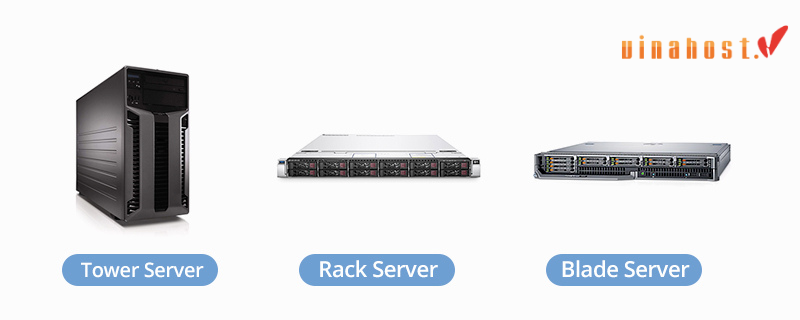
| Feature | What is a Rack Server? | Tower Server | Blade Server |
|---|---|---|---|
| Form Factor | Designed to be mounted in a rack | Standalone, vertical chassis | Designed to be installed in a blade enclosure |
| Size Options | Typically 1U, 2U, 4U, etc. | Varies in height (often taller than 4U) | Blades are thin and fit into a blade chassis |
| Space Efficiency | High, optimized for vertical stacking in racks | Lower, occupies floor space vertically | Extremely high, dense packing in blade chassis |
| Scalability | Easy to scale by adding more servers | Limited scalability within a single tower | Very scalable by adding more blade servers |
| Management | Managed through a centralized rack console | Managed locally on the server itself | Managed centrally through a blade enclosure |
| Cooling | Airflow management optimized in rack | Cooling fans typically built into the tower | Cooling handled at blade enclosure level |
| Network Ports | Typically rear-facing network ports | Ports located on the tower chassis | Network connections handled by blade chassis |
| Applications | Data centers, server rooms, enterprise environments | Small to medium-sized offices, standalone setups | Data centers with high-density computing needs |
| Use Cases | Virtualization, web hosting, enterprise applications | Small business servers, office applications | High-performance computing, data centers |
| Advantages | Space-efficient, scalable, centralized management | Standalone flexibility, easier local management | High-density, reduced cabling, modular scalability |
| Disadvantages | Requires rack infrastructure, limited standalone use | Takes up more floor space, less scalable | Initial setup cost, dependence on blade chassis |
10. Choosing the Right Rack Server: Things to Consider
Selecting the ideal rack server requires careful consideration of your specific needs and workload demands. Here are some key factors to evaluate when making your choice:
10.1. Processing Power and Cores
Evaluate the applications you plan to run on the server. More demanding tasks like complex calculations, scientific computing, or virtualization require servers with powerful CPUs (Central Processing Units) with high core counts. Cores are like individual processors within a CPU, and more cores generally translate to better multitasking and handling demanding workloads.
10.2. Memory Capacity and Speed
The amount of memory (RAM) directly impacts server performance. Memory acts as a temporary workspace, and applications rely on it to store frequently accessed data and instructions. Memory-intensive applications like databases or large-scale data analysis require servers with higher RAM capacity. Additionally, consider memory speed (e.g., DDR4) – faster memory can improve overall server performance.
10.3. Storage Options: HDD, SSD, or a Hybrid Approach
The amount of data you need to store will influence your storage choice. Hard Disk Drives (HDDs) offer larger capacities for cost-effective archival storage of less frequently accessed data. Solid-State Drives (SSDs) provide significantly faster read/write speeds, ideal for applications requiring fast access to frequently used data. A hybri
10.4. Network Connectivity Needs
Consider the volume of data that will flow through the server and the required network speeds. Servers often connect via Gigabit Ethernet or faster interfaces. If you anticipate high network traffic or require ultra-fast data transfer speeds, ensure your chosen server has the appropriate network interface capabilities.
10.5. Budget and ROI Considerations
Rack servers come in a variety of configurations with varying price points. Balance your budget with your actual needs. Don’t overspend on features you won’t utilize, but ensure you choose a server with enough processing power, memory, and storage to handle your workload effectively.
Consider the long-term return on investment (ROI). While a higher initial cost server might seem expensive, its performance and scalability could outweigh the costs in the long run, especially if your needs are likely to grow.
Also read: What is a Cloud Server? | How does a Cloud Server work?
11. The Future of Rack Servers
What is rack server future? As data centers and enterprise IT environments continue to scale, there is a growing emphasis on optimizing space, power consumption, and management complexity.
Future rack servers are likely to incorporate advancements in computing power, such as more efficient processors and memory architectures, to handle increasingly demanding workloads from cloud computing, AI, and big data analytics. Moreover, innovations in cooling technologies and energy efficiency will be crucial in reducing operational costs and environmental impact.
Additionally, the integration of software-defined infrastructure and automation tools will further streamline management tasks and enhance agility in deploying and managing resources. Overall, the future of rack servers is poised to support the expanding digital ecosystem with enhanced performance, scalability, and sustainability features.
12. FAQs
12.1. Are rack servers difficult to set up?
Setting up rack servers can be straightforward with proper planning and familiarity with IT infrastructure. However, it can also present challenges, especially for those new to server deployment. Initially, configuring and mounting servers in a rack requires attention to detail to ensure proper alignment and secure installation.
Connecting power supplies, network cables, and managing airflow for cooling are critical steps that require careful consideration to avoid issues like overheating or cable management problems.
Additionally, configuring server settings, installing operating systems, and implementing security measures demand technical expertise.
12.2. How much do rack servers cost?
The cost of a rack server can vary depending on several factors, making it difficult to give a one-size-fits-all answer. Here’s a breakdown of some key influences on rack server pricing:
- Server size (U rack units): Smaller 1U servers generally cost less than larger 3U or 4U models that offer more space for additional components.
- Processing power and core count: Servers with powerful CPUs and higher core counts will be more expensive compared to those with less processing muscle.
- Memory capacity: The amount of RAM (memory) significantly impacts price. Servers with larger RAM capacities will cost more.
- Storage options: HDDs are generally more affordable than SSDs for storage, so a server with primarily HDD storage will be less expensive than one equipped with high-performance SSDs.
- Brand and model: Different server manufacturers and models will have varying price points depending on features and performance capabilities.
Here’s a general cost range to give you an idea:
- Basic 1U Rack Server: $1,000 – $2,500
- Mid-Range 2U Rack Server: $2,500 – $5,000+
- High-Performance 3U or 4U Rack Server: $5,000+
12.3. Do I need a dedicated server room for a rack server?
Having a dedicated server room for rack servers is not always mandatory but highly recommended for several reasons. A dedicated server room provides a controlled environment crucial for maintaining server reliability and performance. It offers proper ventilation, cooling systems, and adequate space for managing cables and accessing equipment.
Moreover, a dedicated server room helps mitigate risks such as physical security concerns and environmental hazards like dust or humidity, which can affect server operation. It also provides a centralized location for managing power distribution and networking infrastructure, enhancing overall efficiency and accessibility for IT personnel.
12.4. What are some alternatives to rack servers?
There are several alternatives to rack servers, each catering to different needs and environments:
- Tower servers: These are standalone servers housed in a vertical chassis similar to a desktop computer tower. Tower servers are ideal for smaller offices or businesses that do not have dedicated server rooms and prefer a more compact and easy-to-manage server solution.
- Blade servers: Blade servers are designed to be installed in a blade enclosure, which allows for high-density deployment of servers in a smaller footprint compared to traditional rack servers. Blade servers are commonly used in large data centers and cloud environments where scalability and efficient use of space and power are critical.
- Microservers: Microservers are compact, low-power servers designed for specific workloads such as web hosting, simple storage tasks, or light applications. They are cost-effective and energy-efficient alternatives to larger servers, suitable for small businesses or remote office environments.
- Cloud services: Cloud computing provides virtualized computing resources over the internet. Instead of investing in physical servers, businesses can use cloud services to access servers and storage on demand, paying for what they use. Cloud services offer scalability, flexibility, and reduced upfront costs compared to owning and managing physical servers.
Also Read: What is an Application Server? | How Application Server work?
13. Conclusion
In conclusion, rack servers remain a vital part of the data center landscape in 2024 and beyond. Their versatility, scalability, and robust features make them ideal for businesses of all sizes requiring reliable and powerful data management solutions.
As technology continues to progress, rack servers will undoubtedly evolve to meet the changing needs of the data-driven world. Whether you’re a seasoned IT professional or just starting to navigate the world of data management, understanding what is rack server and the power of it is a valuable asset in today’s digital age.
Find out more articles at our Blog and don’t hesitate to contact us for support:
- Email: support@vinahost.vn
- Hotline: 1900 6046
- Livechat: https://livechat.vinahost.vn/chat.php
>> Read more:
What is a Web Server & How Web Servers Work?
What is VPS? | Unveiling the Power Behind Virtual Private Servers




